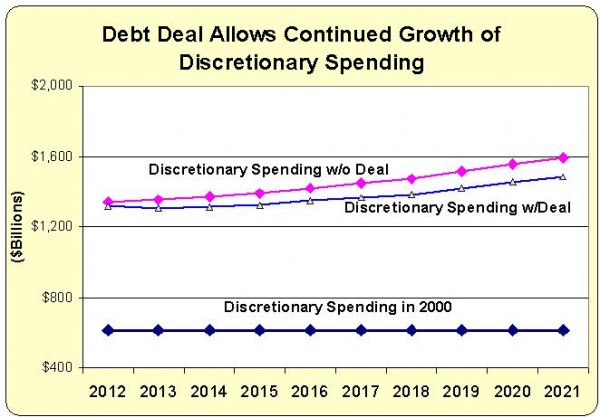Considering the Democrats control the Senate and the White House, I actually think the Republican leadership did a decent job in the debt negotiations. Of course, I had low expectations, but did anybody expect miracles with Obama in the White House?
As you might expect, this means the agreement is – at best – a tiny step on a long journey.
I’ve already looked at the revenue part of the deal, so let’s turn our attention to the spending side of the fiscal ledger. Specifically, the supposed spending cuts for the “discretionary” part of the budget.*
This chart shows you everything you need to understand about the budget deal. The top line (fuchsia, I’m told) is the “discretionary baseline,” which is an estimate of how fast spending would increase to keep pace with factors such as inflation. The next line shows how fast discretionary spending will grow under the budget agreement.
The good news is that discretionary spending does not grow as fast with the budget agreement. The bad news is that it still grows. In other words, the supposed “budget cuts” are based on Washington math, where a spending increase is called a spending cut simply because outlays didn’t rise even faster.
But the really bad news is that the burden of discretionary spending – over the entire 10-year period – will be more than twice as large as it was in 2000. In other words, the budget deal basically leaves unchallenged the entire Bush-Obama spending binge.
But, as the old saying goes, a journey of 14.3 trillion miles begins with a first step.
*By way of background, the federal budget has three types of spending. Entitlements, which are “permanently appropriated” and increase automatically. Net interest, which is the one part of the budget that truly is uncontrollable. And discretionary, which are the parts of the budget funded by annual appropriations bills.

